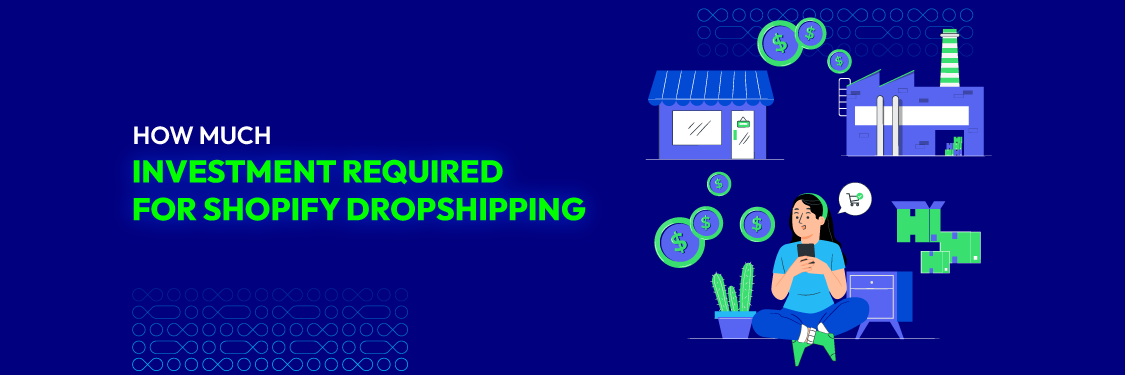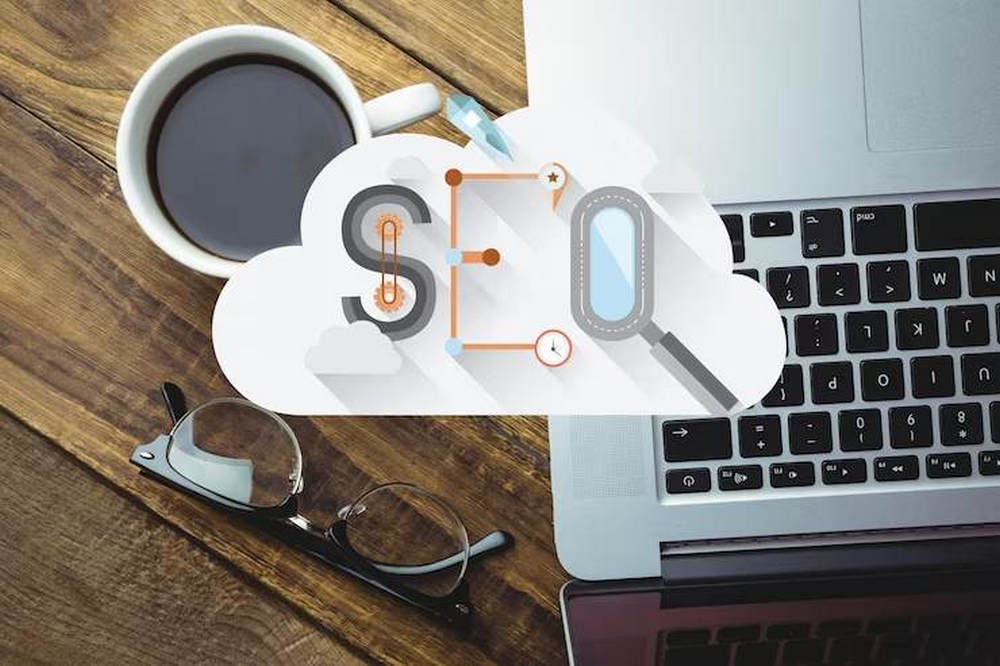How Much Investment Required For Shopify Dropshipping?
Summer Nguyen | 01-17-2024

Starting a dropshipping business on Shopify can be an enticing prospect for budding entrepreneurs and e-commerce enthusiasts. With the promise of low startup costs and the potential for substantial profits, it has become a popular avenue for those looking to venture into online retail.
However, one of the fundamental questions that often arises at the outset is, “How much investment required for Shopify dropshipping?”
Here, we will thoroughly explore the intricacies of budgeting for a Shopify dropshipping business. Our comprehensive guide will help you navigate the investment requirements of Shopify dropshipping and set you on the path to e-commerce success.
What is Dropshipping?
Dropshipping is a retail fulfillment method where an online store refrains from stockpiling the products it offers for sale. Rather than stocking the products, the store acquires items from a third party and arranges shipping directly to the customer when a sale occurs.
In essence, the retailer acts as a middleman between the supplier or manufacturer and the customer, without ever physically handling the products.

Here’s how the dropshipping process typically works:
- Setting up an online store: The dropshipper (retailer) creates an online store, often using platforms like Shopify, WooCommerce, or Amazon.
- Product selection: The dropshipper selects which products they want to sell in their store. These products are usually sourced from suppliers or wholesalers offering dropshipping arrangements.
- Listing products: The selected products are listed on the dropshipper’s online store, complete with descriptions and images.
- Customer orders: Upon a customer initiating an order on the dropshipper’s website and making a payment, the retailer then orders that exact product with the supplier or manufacturer.
- Supplier ships directly: The supplier or manufacturer ships the product directly to the customer’s address. The retailer doesn’t handle the product physically.
- Customer receives product: The customer receives the product from the supplier, often unaware that the product didn’t come directly from the retailer.
Benefits of Dropshipping on Shopify
Dropshipping on Shopify offers several benefits for entrepreneurs and online retailers looking to start an e-commerce business. Here are some of the key advantages:
- Easy to start: Setting up an online store on Shopify is straightforward and doesn’t require advanced technical skills. The platform provides user-friendly tools and templates to design your store, add products, and manage your business.
- Low startup costs: Dropshipping eliminates the need for purchasing inventory upfront, which can significantly reduce your initial investment. You only pay for products when you make a sale.
- Wide product selection: Shopify allows you to easily integrate with various dropshipping suppliers and marketplaces, providing you with entry to an extensive array of products and specialized markets. You can expand your product catalog without the hassle of stocking inventory.
- Flexibility: With Shopify, you can run your dropshipping business from anywhere with an internet connection. It provides the flexibility to manage your store, track orders, and communicate with suppliers on the go.
- Scalability: As your business expands, Shopify can adapt and grow alongside you. It provides a variety of plans and functionalities to accommodate businesses of all sizes. You can easily add more products, optimize your website, and implement marketing strategies to increase sales.
- Integrated marketing tools: Shopify offers built-in marketing and SEO tools to help you attract and retain customers. You can create and manage marketing campaigns, integrate with social media platforms, and optimize your website for search engines.

- Payment processing: Shopify provides a secure and efficient payment processing system. It accepts various payment methods, making it convenient for customers to complete their purchases.
- Customization: You can customize your Shopify store to reflect your brand’s identity and style. Numerous themes and plugins are available to enhance your site’s appearance and functionality.
- Analytics and reporting: Shopify offers detailed analytics and reporting tools to help you track your business’s performance. You can monitor sales, customer behavior, and website traffic, enabling data-driven decision-making.
- Customer support: Shopify provides customer support 24/7, so you can get assistance whenever you encounter issues or have questions about running your dropshipping business.
- Security: Shopify takes security seriously and provides robust measures to protect payment information, ensuring a safe shopping experience.
- Dropshipping apps: The Shopify App Store offers a wide selection of dropshipping-related apps and plugins that can help automate tasks, manage inventory, and improve your operations’ efficiency.
While dropshipping on Shopify offers many advantages, it’s essential to recognize that success still requires hard work, effective marketing strategies, and excellent customer service. Competition can be fierce, so it’s crucial to differentiate your brand and continually refine your business model to meet customer needs and expectations.

How Much Investment Required for Shopify Dropshipping?
The initial investment for a dropshipping business on Shopify can range from $500 to $5,000 or more. This is a rough estimate; your actual costs may vary based on many factors and your choices.
If you’re looking for professional assistance in developing your Shopify dropshipping store, you may also consider Mageplaza’s Shopify development service, which can help streamline the process and enhance your online business.

Creating a detailed business plan and budget that considers all potential expenses is crucial to determining the specific investment required for your Shopify dropshipping venture.
Here’s a rough breakdown of a budget to help you get started:
1. Shopify Subscription
Shopify offers different pricing plans to suit your business needs.
The Basic Shopify plan costs $29 monthly and provides essential features for a small store. The Shopify plan, priced at $79 per month, offers more advanced features and scalability. If you’re aiming for a larger operation, the Advanced Shopify plan is available at $299 per month.
2. Domain Name
You’ll need to secure a domain name for your online store. Registering a domain typically incurs annual costs between $10 and $20. Opt for a memorable and pertinent domain name that reflects your brand.
3. Website Design and Development
The design and development of your Shopify store are crucial for creating a user-friendly as well as visually appealing platform. You have the choice to begin using a free Shopify theme, but investing in a premium theme, which can range from $100 to $180, can offer enhanced customization and features.
If you require professional design and development services, expenses can fluctuate considerably based on your unique needs.
4. Product Costs
While you won’t need to stock inventory, you’ll need to budget for the cost of the products you plan to sell. These costs will vary based on the suppliers you choose and the products you decide to offer in your store.
Research potential suppliers and their pricing carefully to determine these expenses.
5. Marketing and Advertising
Allocating a budget for marketing and advertising is crucial to promoting your dropshipping business effectively. This budget can encompass various marketing channels and strategies, including:
- Paid advertising: Consider costs for platforms like Google Ads or Facebook Ads. Your initial budget for paid advertising might range from $200 to $500 or potentially higher, depending on your strategy.
- Search engine optimization (SEO): If you plan to invest in SEO services or tools to optimize your website for search engines, budget accordingly.
- Content marketing: Include expenses for content creation and promotion if you intend to create blog content or other types of content to attract and engage your audience.
- Email marketing: Allocate funds for email marketing software and potential costs for running email campaigns.
- Social media marketing: Budget for advertising and content creation to build and engage your audience.
6. Apps and Plugins
Shopify offers various apps and plugins that can enhance your store’s functionality. While some apps are free, others come with monthly or one-time fees.
Allocate approximately $100 to $300 annually for essential apps and plugins for your business. These may include inventory management tools, email marketing apps, SEO optimization plugins, and other solutions that align with your business needs.
7. Shipping Costs
In a typical dropshipping model, shipping costs are often covered by your suppliers or factored into the product prices. However, it’s prudent to account for potential shipping expenses, especially if you offer free shipping to your customers.

Calculate these costs based on the products you sell and your shipping methods. Consider maintaining a separate fund to cover unexpected shipping costs or returns.
8. Customer Support
Providing excellent customer support is a cornerstone of a successful dropshipping business. Your budget for customer support can include expenses related to support tools and services.
For example, helpdesk software or chat support services may be necessary. Budget approximately $20 to $100 or more per month for customer support solutions, depending on the scale of your operations and the level of support you aim to provide.
9. Legal and Compliance
Legal and compliance costs are essential to ensure your dropshipping business operates within the bounds of the law.
Consider budgeting for expenses such as business registration fees, licenses, and any necessary legal consultations or services. Expenses may vary from $100 to $500 or potentially higher, depending on your business’s location and specific legal requirements.
10. Miscellaneous Expenses
The miscellaneous expenses category covers various unforeseen or smaller costs associated with running your business. These expenses can include software subscriptions, office supplies, transaction fees, and other incidental costs that may arise.
Allocate a buffer of approximately 5% to 10% of your total budget for these miscellaneous expenses to account for unexpected financial requirements.
Ways to Save Money When Launching a Shopify Dropshipping Business
Saving money when starting a dropshipping business on Shopify is important to maximize your initial budget and increase your chances of profitability. Here are some strategies to help you save money as you launch your dropshipping venture:
- Choose the right Shopify plan: Start with the Basic Shopify plan at $29/month. It provides most of the essential features you’ll need to get your business off the ground. You can upgrade to a higher-tier plan as your business grows and requires more advanced features.
- Use free or affordable themes: Shopify offers free themes, and there are affordable paid themes available as well. Begin with a free theme and only invest in a premium theme if it’s necessary for your branding or functionality.
- Limit app expenses: While apps can enhance your store’s capabilities, be selective in choosing and installing them. Start with free apps and only add paid ones when they are essential to your business operations.
- Optimize images: Compress and optimize product images to reduce page loading times. This can help you avoid additional bandwidth and storage costs associated with larger files.
- Effective marketing on a budget: Focus on cost-effective marketing strategies initially. Utilize free or low-cost social media platforms, create high-quality content, and explore email marketing, which can be relatively affordable to start.

- Negotiate with suppliers: When sourcing products from suppliers, negotiate terms and pricing to secure better deals. Seek out suppliers that provide competitive pricing and favorable shipping terms.
- Monitor advertising spending: Be cautious with paid advertising. Start with a modest budget for advertising campaigns and optimize them over time based on their performance.
- Use dropshipping platforms: Consider using dropshipping platforms and marketplaces that offer free access to their product catalogs. This can save you money compared to platforms that charge subscription fees.
- Keep inventory low: Avoid overstocking products. Maintain a lean inventory and only order products from your suppliers when you have confirmed orders from customers. This minimizes storage costs and reduces the risk of unsold inventory.
- Outsource tasks wisely: If you require professional services like graphic design, content writing, or web development, consider outsourcing to freelancers or agencies rather than hiring full-time staff. This can save money on labor costs.
- Track expenses: Maintain a detailed record to understand where your money is going. This will help you identify areas to cut costs or optimize spending.
- Reinvest profits: As your dropshipping business generates revenue, reinvest a portion of your profits into growth strategies and scaling your operations. Avoid excessive personal withdrawals until your business is well-established.
- Educate yourself: Invest time in learning about dropshipping best practices, digital marketing, and e-commerce. Utilize free or low-cost educational resources, such as online courses and blogs, to expand your knowledge and skills.
By implementing these cost-saving strategies and maintaining financial discipline, you can efficiently allocate your budget, reduce unnecessary expenses, and position your dropshipping business for long-term success on Shopify.
5 Pitfalls to Avoid When Starting a Dropshipping Business on Shopify
Starting a dropshipping business on Shopify can be a lucrative venture, but it’s essential to avoid common mistakes that can hinder your success. Here are five mistakes to steer clear of when launching your dropshipping business:
1. Poor Product Research and Selection
Mistake: One of the most critical aspects of dropshipping is selecting the right products to offer. Choosing products solely based on personal preference or popular trends is a mistake without considering market demand, competition, or profit margins.
Avoidance Strategy: Conduct extensive market research to identify products with strong demand and growth potential. Use tools like Google Trends, keyword research, and competitor analysis to inform your choices. Analyze customer reviews and feedback to understand market needs better.
2. Neglecting Supplier Due Diligence
Mistake: Relying on suppliers without proper vetting can lead to issues like inconsistent product quality, shipping delays, and poor communication. This can result in customer dissatisfaction and harm your business reputation.

Avoidance Strategy: Invest time in thorough supplier due diligence. Choose reputable suppliers with a history of reliability and quality. Contact potential suppliers with questions to gauge their responsiveness and professionalism. Consider ordering sample products to assess quality and delivery times firsthand.
3. Underestimating the Importance of Store Design
Mistake: Neglecting your Shopify store’s visual appeal and functionality can deter potential customers and lead to a poor user experience.
Avoidance Strategy: Prioritize a well-designed store with an intuitive layout. Utilize professional or premium Shopify themes to enhance aesthetics and user experience. Ensure your website is mobile-responsive to accommodate mobile shoppers. Consistency in branding and a clear navigation structure can significantly improve user engagement.
4. Ignoring Marketing and Customer Acquisition
Mistake: Overlooking marketing efforts can result in low website traffic and slow growth. Your store may struggle to gain visibility in a competitive market without effective customer acquisition strategies.
Avoidance Strategy: Develop a comprehensive marketing plan that includes social media marketing, email marketing, content marketing, and paid advertising. Prioritize search engine optimization (SEO) to improve your store’s visibility in search results. Regularly analyze the performance of your marketing strategies and adapt them based on data-driven insights.
5. Poor Customer Service and Order Fulfillment
Mistake: Providing subpar customer service or failing to fulfill orders efficiently can lead to customer complaints, returns, and negative reviews, damaging your business’s reputation.
Avoidance Strategy: Place a strong emphasis on exceptional customer service. Respond promptly to customer inquiries and concerns with empathy and professionalism. Maintain clear and transparent communication throughout the purchase process. Implement efficient order processing and tracking systems to ensure accurate and timely order fulfillment.
Conclusion
In Shopify dropshipping, the investment required varies, but the core principles of wise budgeting and strategic resource allocation remain consistent. Remember, success in this entrepreneurial journey demands more than just money; it requires dedication, market insight, supplier relationships, and effective marketing.
As you begin, know that your investment extends beyond finances—it encompasses your time, effort, and determination. Balance financial prudence with creativity, refine your business continuously, and prioritize customer value.
With smart planning and a commitment to excellence, you can transform your investment into a thriving e-commerce venture. So, set your budget, start your journey, and strive for e-commerce success.






![Top 20+ Must-have Shopify Apps for 2025 [Free & Paid] - Mageplaza](https://cdn2.mageplaza.com/media/blog/must-have-shopify-apps/top-must-have-shopify-apps.png)
![[2025 Updates] Top 10+ Upsell Apps for Shopify - Mageplaza](https://cdn2.mageplaza.com/media/blog/best-upsell-shopify-app/cover.png)